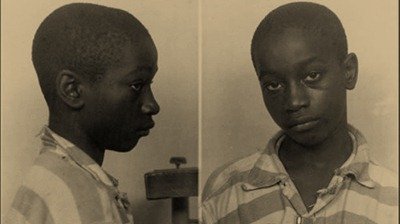Nearly 70 years ago, 14-year-old George Junius Stinney Jr. from South Carolina was convicted of murdering two white girls in a one-day trial in which his lawyers called no witnesses, and executed by electrocution.
Back in 2014, attorneys in South Carolina say they have fresh evidence that warrants a new trial in the case of George Junius Stinney Jr.
George Stinney Jr. was the youngest person to be executed in the US in the last century, and attorneys say the request for another trial so long after a defendant’s death is the first of its kind in the state.
No official record of the original court proceedings exists; no trial participants are alive, and no evidence was preserved. The law is unclear on whether any statute of limitations would prevent the case from being reopened.
Despite those obstacles, attorneys for George Stinney’s family will argue at a hearing Tuesday that the crime that rocked the small mill town of Alcolu in 1944 deserves another look.
The defense filed its motion requesting a new trial in October based on newly discovered evidence. Since then, new witnesses who could help exonerate George Stinney have come forward, including a former cellmate who says the teen told him police forced his confession, attorneys said.
The defense also is relying on old newspaper accounts and a few records in state and county archives to make their case to a judge in Sumter, about 20 miles from the town where George Stinney was tried and convicted.

Lawyers said they had determined George Stinney was convicted solely on testimony by police who said the teen confessed to killing Betty June Binnicker, 11, and Mary Emma Thames, 7. The two girls disappeared on March 23, 1944, after leaving home on their bicycles to look for wildflowers.
The girls rode a distance of about a mile to a railroad track that divided the segregated town, according to the defense’s account of the case in court records.
George Stinney and his younger sister Amie were sitting on the tracks as their family cow grazed nearby. Amie recalls the girls asking where they could find flowers before both pairs of children went their separate ways.
Betty June Binnicker and Mary Emma Thames never returned home. A search party found their bodies the next morning in a shallow ditch behind a church. Their skulls had been crushed and the bicycles laid on top of them.
After George Stinney told someone he had seen the girls along the railroad tracks, he was picked up by police and held for five days before being arrested, said Matthew Burgess, one of the attorneys seeking a new trial.
The teen’s family was run out of town, and his siblings never saw him again.
George Stinney’s lawyers called no witnesses during his day-long trial a month after the murders, according to the current defense team, and a jury of white men deliberated for only 10 minutes before finding him guilty.
Then-governor Olin D. Johnston refused to grant clemency.
George Stinney, who weighed just 95 pounds, was executed by electrocution in June 1944.
Solicitor Ernest “Chip” Finney III, the prosecutor who will appear at the hearing this week for the state, said the case was the most interesting one ever to cross his desk. But he said he will argue that no information about the original trial exists to show it had been conducted improperly.
Relatives of Betty June Binnicker, one of the girls killed, do not want the case revisited without good reason.
George Stinney’s sister, Amie Ruffner, now in her 70s and living in New Jersey, will testify that Stinney was with her the entire day of the murders and could not have killed the girls.
[youtube _Vex1KJUgSk 650]
